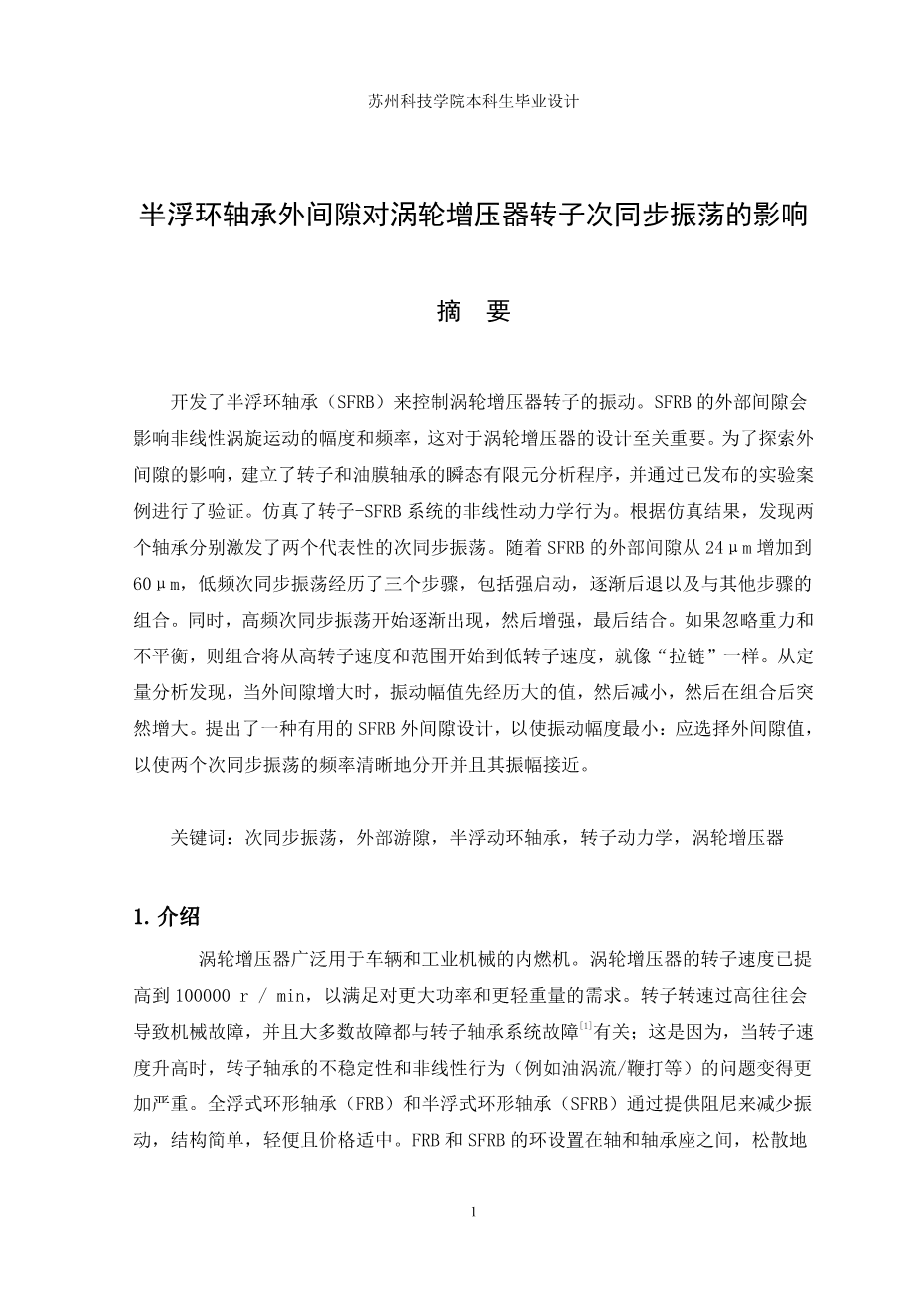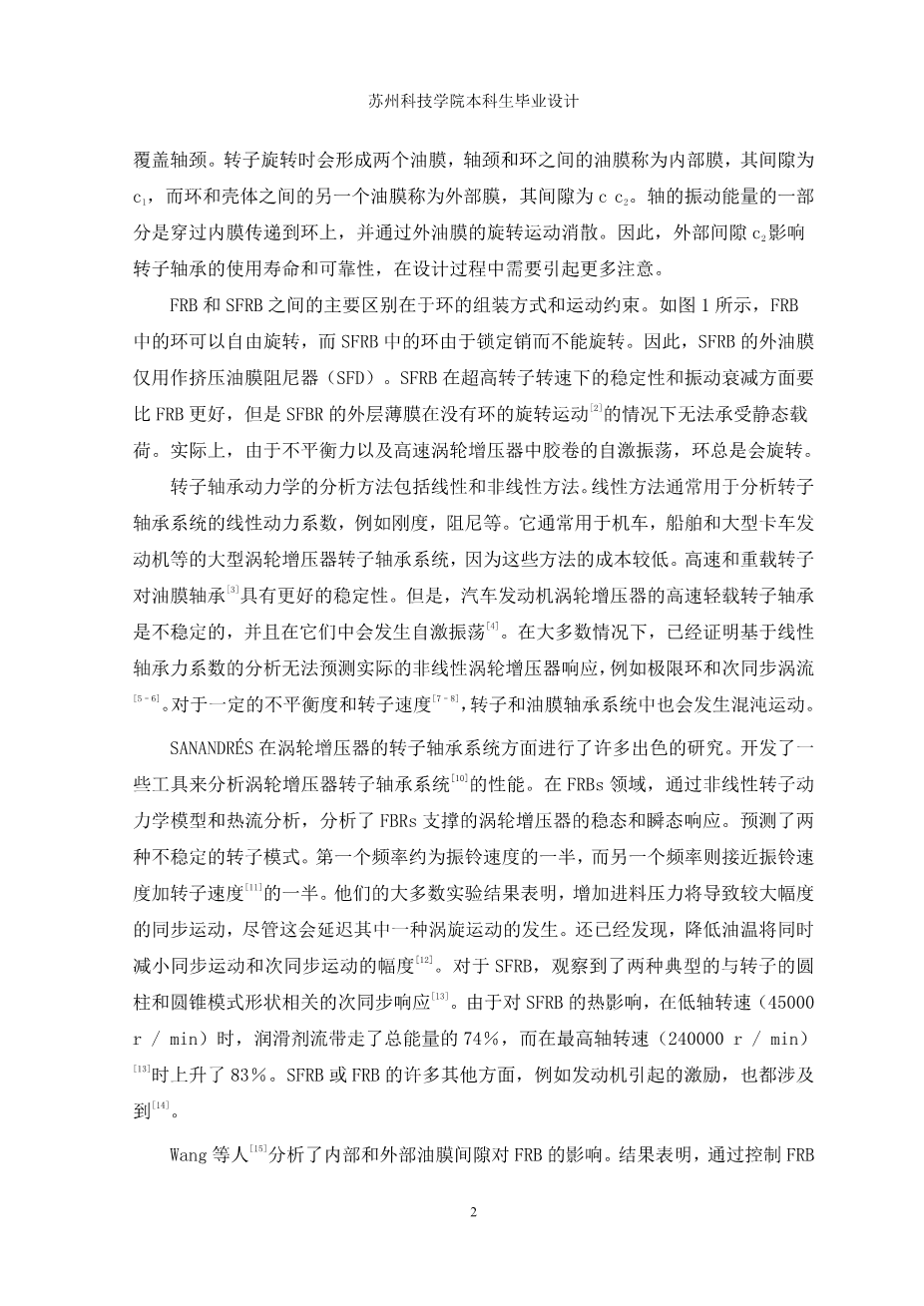CHINESE JOURNAL OF MECHANICAL ENGINEERING
Effects of Semi-floating Ring Bearing Outer Clearance on the Subsynchronous Oscillation of Turbocharger Rotor
Abstract: Semi-floating ring bearing(SFRB) is developed to control the vibration of turbocharger rotor. The outer clearance of SFRB affects the magnitude and frequency of nonlinear whirl motion, which is significant for the design of turbocharger. In order to explore the effects of outer clearance, a transient finite element analysis program for rotor and oil film bearing is built and validated by a published experimental case. The nonlinear dynamic behaviors of rotor-SFRB system are simulated. According to the simulation results, two representative subsynchronous oscillations excited by the two bearings respectively are discovered. As the outer clearance of SFRB increases from 24 mu;m to 60 mu;m, the low-frequency subsynchronous oscillation experiences three steps, including a strong start, a gradual recession and a combination with the other one. At the same time, the high-frequency subsynchronous oscillation starts to appear gradually, then strengthens, and finally combines. If gravity and unbalance are neglected, the combination will start starts from high rotor speed and extents to low rotor speed, just like a “zipper”. It is found from the quantitative analysis that when the outer clearance increases, the vibration amplitude experiences large value firstly, then reduction, and suddenly increasing after combination. A useful design principle of SFRB outer clearance for minimum vibration amplitude is proposed: the outer clearance value should be chosen to keep the frequency of two subsynchronous oscillations clearly separated and their amplitudes close.
Keywords: subsynchronous oscillation, outer clearance, Semi-floating ring bearing, rotordynamics, turbocharger
Introduction
Turbocharger is widely used in internal combustion engines of vehicles and industrial machines. The rotor speed of turbocharger has been increased to over 100 000 r/min to meet the demands for more power and less weight. High rotor speed tends to bring about mechanical failure, and most malfunctions are associated with rotor-bearings system failure[1]; this is because, the problem of instability and nonlinear behaviors of rotor-bearings, such as oil whirl/whip, etc. becomes severe when rotor speed rises. Fully-floating ring bearings(FRBs) and semi-floating ring bearings(SFRBs) are utilized to decrease the vibrations by providing damping, with a simple, light and affordable structure. The rings of FRB and SFRB are set between the shaft and housing, covering the journal loosely. Two oil films are formed when the rotor rotates, and the oil film between the journal and ring is called inner film with a clearance named c1, while the other oil film between the ring and housing is called outer film with a clearance named c2. A part of vibration energy of the shaft is
transferred across the inner film to the ring and dissipated by whirling motion of the outer oil film. Therefore, the outer clearance c2 affects operating life and reliability of the rotor-bearings, and needs to be paid more attention during the design process.
The major differences between FRB and SFRB are in their ways of assembling and motion constraint of the ring. The ring in FRB can rotate freely, while in SFRB it cannot rotate because of a locking pin, as shown in Fig. 1. Therefore, the outer oil film of SFRB just acts as a squeeze film damper(SFD). SFRB provides a better performance than FRB in stability and vibration attenuation at super high rotor speed, but the outer film of SFBR cannot support static load without whirling motion of the ring[2]. Actually the ring will always whirl due to the unbalanced force and the filmrsquo;s self-excited oscillations in high-speed turbochargers.
The analysis methods for rotor-bearing dynamics include both linear and nonlinear methods. Linear methods are often applied to analyze the linear dynamic coefficients of rotor-bearings system such as stiffness, damping, etc. It is usually used for large turbocharger rotor-bearings system in locomotive, marine and large trucks engine etc., because those low-speed and heavy-load rotors have better stability for oil film bearings[3]. However, the high speed and light load rotor-bearings in automotive engine turbochargers are unstable, and self-excited oscillations occur in them[4]. In
most situations, analyses based on linearized bearing force coefficients have been proved unsuccessful to predict the actual nonlinear turbocharger responses, such as the limit cycle and subsynchronous whirl[5–6]. The chaotic motions can also occur in the system of the rotors and oil film bearing for a certain value of imbalance and rotor speed[7–8].
Nonlinear analysis method is needed to calculate the oil film force for transient response simulation. Many researchers have proven the advantages of the nonlinear method in turbocharger dynamic performance prediction, including the limit cycle amplitude and the frequencies of subsynchronous whirls[2, 5, 9].
Fig. 1. Rotor supported by SFRB (rotor-SFRB)
SAN ANDREacute;S has done many outstanding researches in rotor-bearings system of turbochargers. Some tools were developed to analyze the behaviors of the turbocharger rotor bearing system[10]. In the field of FRBs, the steady state and transient responses of turbocharger supported by FBRs were analyzed by nonlinear rotordynamic model coupled with thermal flow analysis. Two unstable rotor modes were predicted. First onersquo;s frequency is about half the ring speed while the other onersquo;s is close to half the ring plus rotor speed[11]. Most of th
剩余内容已隐藏,支付完成后下载完整资料


英语译文共 13 页,剩余内容已隐藏,支付完成后下载完整资料
资料编号:[422590],资料为PDF文档或Word文档,PDF文档可免费转换为Word
以上是毕业论文外文翻译,课题毕业论文、任务书、文献综述、开题报告、程序设计、图纸设计等资料可联系客服协助查找。


